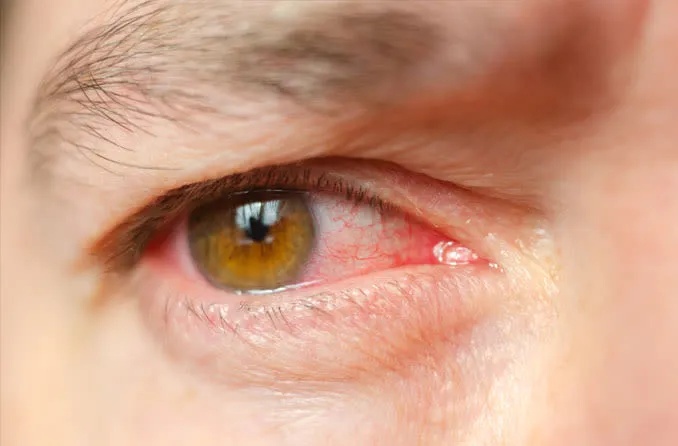Pterygium, also known as "Surfer’s Eye," is a non-cancerous tissue growth that develops on the white part of the eye (conjunctiva). It is most commonly caused by excessive exposure to ultraviolet (UV) rays. This condition affects millions of people of all ages and can range from mild cases requiring no treatment to severe cases that impair vision and necessitate surgery.
Symptoms of Pterygium
Pterygium is often noticeable either visually or through discomfort. The most common symptoms include:
- Redness
- Itching and burning sensation
- Irritation and a foreign body sensation
- Watery or dry eyes
- Blurred vision (in advanced cases)
If the growth extends onto the cornea, it can significantly affect vision. In such cases, an urgent eye examination is recommended.
Causes of Pterygium (Risk Factors)
Although long-term exposure to sunlight is the primary cause of pterygium, several factors can increase the risk of developing this condition.
| Risk Factor | Explanation |
|---|---|
| UV Exposure | More common in individuals who spend extended time under the sun. |
| Outdoor Work | Higher risk in farmers, fishermen, construction workers, and surfers. |
| Dry Eyes | Insufficient tear production can accelerate pterygium growth. |
| Environmental Irritants | Dust, wind, smoke, and pollen contribute to eye irritation. |
| Hot Climates | More frequently seen in people living in tropical or equatorial regions. |
Can Pterygium Be Treated?
Not all cases of pterygium require treatment. However, if it affects vision or causes significant discomfort, medical intervention is necessary.
Non-Surgical Treatment Options
For mild cases, the following treatments can help relieve symptoms:
- Artificial tears (eye drops) → Prevents dryness and reduces irritation.
- Corticosteroid ointments → Helps alleviate redness and swelling.
- UV-blocking sunglasses → Protects the eyes from further UV exposure and slows progression.
These treatments do not eliminate pterygium but can help manage symptoms and prevent further growth.
Pterygium Surgery (Surgical Treatment)
If pterygium progresses toward the cornea and begins to impair vision, surgery is necessary.
- Performed under local anesthesia → The procedure is painless.
- Takes approximately 30 minutes → No hospital stay is required.
- Amniotic membrane transplantation may be used → Reduces the chance of regrowth.
Post-surgery, eye drops and follow-up check-ups are essential for a smooth recovery.
Does Pterygium Go Away on Its Own?
In some cases, pterygium growth may stop or shrink slightly, but complete regression is rare. Early diagnosis and preventive measures are crucial.
How to Prevent Pterygium?
The best way to prevent pterygium is to take protective measures, including:
- Wearing UV-protective sunglasses outdoors.
- Using a hat to shield the eyes from direct sunlight.
- Keeping the eyes moisturized with artificial tears.
- Wearing protective eyewear in dusty or windy environments.
Can Pterygium Be Treated?
Pterygium can be managed and treated effectively. Mild cases can be controlled with eye drops and ointments, while advanced cases may require surgery to prevent vision loss. If you notice an abnormal growth, redness, itching, or vision problems, consulting an eye specialist is highly recommended.
Protect Your Eye Health – Schedule an Eye Exam Today!
If you experience pterygium symptoms, seek early diagnosis by scheduling an eye examination to protect your vision!









